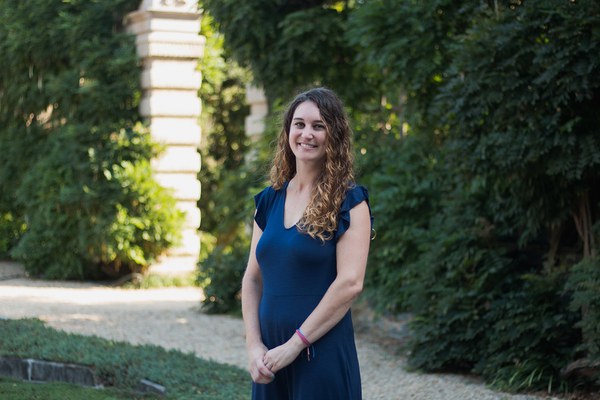Gina Buckley, a dual PhD candidate in anthropology and demography at Pennsylvania State University, is a junior fellow in Pre-Columbian Studies. Her recent research report, “What Is the City but the People? A Comparative Analysis of Migration and Socioeconomic Status Groups in the La Ventilla District of Classic Period Teotihuacan,” compared isotopic signatures in tooth enamel and mortuary practices in two neighborhoods of one of Mesoamerica’s largest ancient cities.
Q&A with Gina Buckley
Why study human migration at a place like Teotihuacan?
Teotihuacan was a Classic Period city in ancient Mexico, active from 100 BCE to 600 CE, about 45 kilometers northeast of what is now Mexico City. With about 100,000 people living there at its peak, Teotihuacan was the largest populated city of Pre-Columbian Mesoamerica up until the Aztec times, almost a millennium later.
Unlike other ancient sites, Teotihuacan was full of migrant individuals who maintained separate cultural identities throughout the city’s occupation. A lot of times, migrants will come into an area and quickly assimilate. What makes Teotihuacan a unique ancient city is that groups of people with distinct cultural practices lived side by side in a seemingly peaceful and orderly way. People created buildings and other materials to remember their homelands. Somehow the largest aggregation of people in the Pre-Columbian world up until that point was able to coexist without the requirement that all people fully assimilate to local customs. That is fascinating.
Teotihuacan attracted all sorts of people, coming from short and long distances. Multiple lines of evidence—material culture, burials, architecture, isotopic signatures—help us identify where migrants originated. We know that people came from Oaxaca, in Southern Mexico; from the Gulf Coast, around Veracruz; from the Maya region; from all over the Basin of Mexico, a small bit of which Teotihuacan occupies. And there’s also evidence of people coming from West Mexico, what’s now the state of Michoacán.
What research have you been doing here at Dumbarton Oaks, and what are your preliminary findings?
I’m looking at two different neighborhoods in Teotihuacan: one that had a poor, lower-status, working group of people, and one that shows evidence of higher, more elite status. Everything is still preliminary, but so far it appears that those of higher status are potentially more likely to be immigrants.
Now, whether that is because they came as working-class people and achieved higher status after their arrival in the city, or whether they came in with already elevated status is yet to be determined. I don’t know if we can ever answer that question.
At Dumbarton Oaks, I am analyzing all the data I collected, writing the dissertation, and building what I’m calling a mortuary database. I’m going through field reports and books, looking for data on all the different burials throughout Teotihuacan in order to start making comparisons outside the two neighborhoods I focus on.
It’s like detective work, trying to track down small bits of information published over the last four or five decades and put it all together in one place. There are a lot of great Spanish-language field reports here from original excavations back in the ’90s that I was unable to obtain outside of Dumbarton Oaks. Also, Saburo Sugiyama was here in the fall, and he’s a veteran of Teotihuacan archaeology. Bouncing ideas off him has been extremely helpful.
How do geology and chemistry help explain the movement of ancient people?
I work with isotopic systems, which track movement of people through the foods they ate and the water they drank. Strontium isotopes in human tissues reflect the geology of the region where that person lived, assuming they ate locally grown foods: soils, plants, everything grows or is connected to runoff from the bedrock, which leaves an isotopic signature in human tissues.
My research looks exclusively at strontium isotope signatures found in human tooth enamel, which are locked in during the very earliest years of life. If you were to measure the same isotope in bone, which is constantly remodeling or being broken down and rebuilt as a human grows and lives, you would have a strontium signature that represents where the individual was living a few years before death. But tooth enamel is a harder, crystalline, less porous structure, making it a more reliable data source on human movement. Additionally, tooth enamel forms at a young age and does not remodel, therefore giving researchers a better idea of a person’s location around the time of birth.
Therefore, we can compare where the person was born—based on the strontium signatures in tooth enamel—to the place where they died or were buried. Isotopic systems let us track movement from birth through late in life.
Julia Ostmann is postgraduate writing and reporting fellow at Dumbarton Oaks. Photo by Elizabeth Muñoz Huber, postgraduate digital media fellow.
